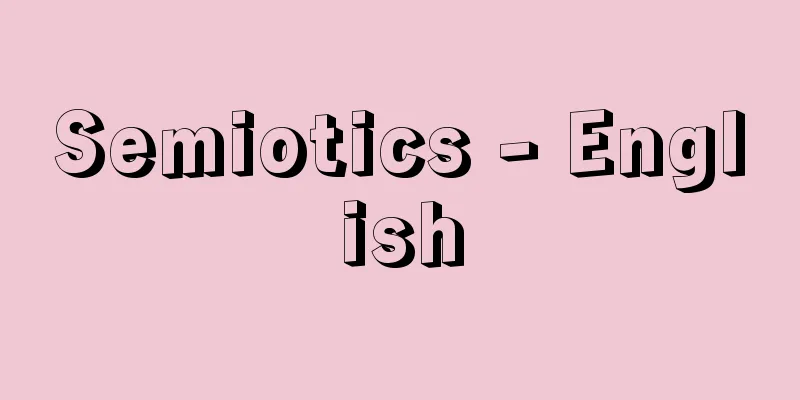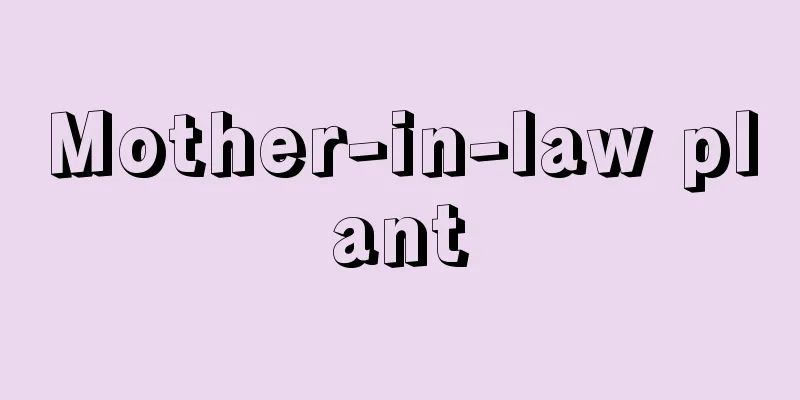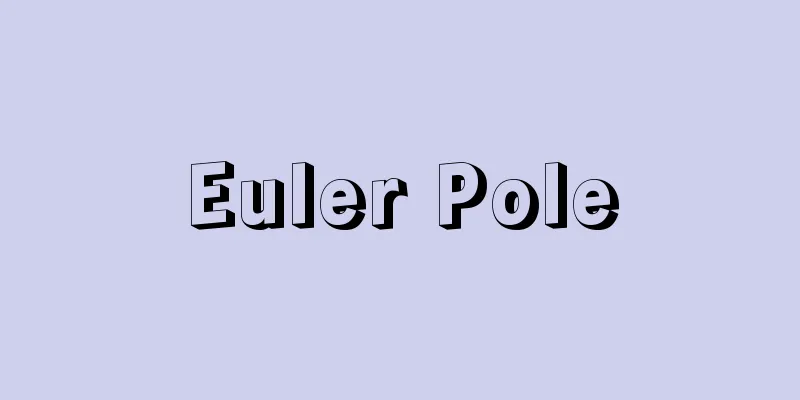Semiotics - English

|
The theory of symbols. Discussions about symbols have been going on for a very long time, and can be found in many works by ancient Greek philosophers. Even today, discussions about symbols are taking place in a wide variety of fields, including philosophy, logic, linguistics, anthropology, ethology, psychology, biology, and computer theory. Recently, there has been a movement to establish a new field called "semiotics," and there seem to be a variety of opinions among the people participating in this movement. Semiotics that uses terms from linguistics and cultural anthropology seems to be the most popular at present, but many of the concepts that correspond to these terms are called by different terms in other fields. It is impossible to give an overview of these countless discussions in the limited space available here, so here I will limit myself to listing some philosophical issues surrounding symbols. (1) The word symbol can be used to refer to a particular object, such as a letter printed in a particular place in a particular copy of a particular book, or to all letters similar in appearance, or to the mental image that is supposed to be evoked in the mind of someone who sees such a letter. In logic, elements of a set are sometimes considered to be symbols more abstractly, for example, all real numbers are treated as symbols. When we try to classify the different levels of symbols and determine the relationships between them, we are caught up in the ancient problem of the relationship between the particular and the universal, a problem that is still the subject of lively debate. (2) The expression "the meaning of a sign" is a phrase that is used casually in daily life. However, if one is asked "What is meaning?" in a straightforward manner, it is not easy to answer. For proper noun-like signs, the answer that it is the object that it refers to is often given, but this would mean that the names of fictional characters would have no meaning. For common noun-like signs, two words that have the same scope (extension) are often said to have different meanings. To explain such cases, many philosophers try to distinguish between what is referred to by a sign and what is the meaning of the sign, but even if they can point out the need for this distinction, many of them struggle to fully explain the meaning itself. As a result, some philosophers, like Quine, propose to exclude the concept of meaning itself from discussions of signs. In any case, it is unlikely that an answer that satisfies everyone in the philosophical community will be found for the time being. (3) People who try to discuss symbols from a linguistics perspective, while fully acknowledging that the worldview changes depending on the symbol system, tend to proceed with the discussion on the premise of a common-sense understanding of the world and emotions expressed by symbols. However, in philosophy, this common-sense understanding itself is the subject of scrutiny. There are philosophies that acknowledge the existence of humans who manipulate symbols, but deny the existence of the mind and attempt to analyze symbolic phenomena in a behaviorist way. Which of mind-body dualism, materialism, or behaviorism is correct is still one of the topics of debate. (4) Even among those who accept the existence of the mind, some have doubts about whether it is possible to univocally determine from a symbol the phenomenon in the mind that should correspond to it. In fact, if we use the incompleteness theorem in logic and the results of model theory, it seems more reasonable to think that this determination is impossible. This also applies not only to things in the mind, but generally to the relationship between a symbol and the content that it is supposed to express. If we expand this idea, we also come across the uncertainty of translation. Thus, although symbols are, so to speak, inevitably ambiguous, it is also true that there are situations in which it seems to be quite meaningful to discuss the relationship between a symbol and the thing that it expresses. This raises the question of how to reconcile this ambiguity with the situation in which it seems possible to express something. The popularity of the many-worlds theory in philosophy, which holds that one symbol is simultaneously related to things in many worlds, is also related to this problem. (5) Attempts to express the transcendental through symbols have been made since ancient times, but if this expression were truly possible, the transcendent would no longer be transcendent. How should we resolve this paradox? This has been a problem in religion and philosophy since ancient times, but this problem is in fact connected to the problems in (3) and (4). [Yoshida Natsuhiko] "Symbols and Humans" by Natsuhiko Yoshida (1983, Obunsha) [Reference] |Source: Shogakukan Encyclopedia Nipponica About Encyclopedia Nipponica Information | Legend |
|
記号の理論をいう。記号についての議論は、きわめて古くから行われており、たとえば古代ギリシアの哲学者の著作にも数多くみられる。また現代でも、哲学、論理学、言語学、人類学、行動学、心理学、生物学、コンピュータ理論などの、実にさまざまの分野で記号についての議論が行われている。近ごろでは、「記号論」とよばれる一つの新分野をたてようとする動きもあるが、この動きに参加している人たちのなかにも、さまざまな意見があるようである。目下流行しているのは、言語学や文化人類学の術語を使う記号論のようであるが、この術語に対応する概念のなかには、ほかの分野で別のことばでいわれているものも多い。こういった無数の議論について概観することは、限られた紙数ではとてもできないことなので、ここでは記号をめぐるいくつかの哲学的問題をあげておくにとどめる。 (1)記号ということばは、特定の書物の特定のコピーの特定の箇所に印刷されている一つの文字、といった、特定の物体をさすのに使われることもあり、それと似た形をしている文字すべてをさすのに使われることもあり、そういった文字をみた人の心中に引き起こされるものと想定されている心像をさすのに使われることもある。論理学においては、もっと抽象的に、集合の元を記号と考え、たとえば実数をすべて記号として扱うこともある。このような、記号のさまざまなレベルの違いを分類し、その間の関係を定めようとすると、個と普遍者との関係をめぐる、古来の普遍問題に巻き込まれる。この問題は現在でも活発な論議の対象となっているものである。 (2)「記号の意味」という表現は、日常なにげなしに使われることばである。しかし、開き直って「意味とは何か」と聞かれると、答えることはけっしてたやすくはない。固有名詞的な記号については、それが指示する対象であるとする答えがよく行われているが、それでは架空の人物の名前には意味がなくなってしまう。また普通名詞的なものでは、その適用範囲(外延(がいえん))が同じ二つのことばが意味が違うとされることが多い。このような場合を説明するために、記号によって指示されるものと、記号の意味になっているものとを区別しようとする哲学者は多いが、この区別の必要は指摘できても、意味そのものについての説明は十分にできずに苦しんでいる者が多い。そこでクワインのように、意味という概念そのものを記号に関する論議から締め出そうと提唱する哲学者も出てくる。とにかく、意味をめぐる問題は、哲学界で当分の間、だれをも満足させるような解答は出そうもないものである。 (3)言語学のほうから記号について論じようとする人は、世界観が記号体系によって変わってくることは十分認めながらも、記号によって表現される世界とか感情とかいったものについては、いちおう常識的な了解を前提にして話を進めることが多いようである。しかし、哲学的には、この常識的な了解そのものが検討の対象となる。記号を操る人間の存在は認めても、心の存在は否定し、行動主義的に記号現象を分析しようとする哲学もある。心身二元論と、唯物論と、行動主義とのうちのどれが正しいかは、まだ論争の主題の一つなのである。 (4)心の存在を認める立場をとる人でも、記号から、これに対応しているはずの、心のなかの現象を、一義的に決定できるかどうかについては、疑問に思う人もいる。事実、論理学での不完全性定理やモデル論の成果を援用すれば、この決定は不可能であると考えるほうが妥当なようである。また、これは、心のなかの事柄に限らず、一般に、記号とその表現しているはずの内容との間の関係について成り立つ。また、この考え方を広げていくと、翻訳の不確定性にも突き当たる。このように、記号には、いわば宿命的な多義性が付きまとうにもかかわらず、一方では、記号とそれによって表現される事柄との関係についての議論を行うことに、十分な意味があるように思われる局面のあることも事実である。そこで、この多義性と、表現が可能であるように思われる事態との間にどう折り合いをつけるかという問題が生ずる。一つの記号が同時に多数の世界の事物と関連しているのだとする多世界説が哲学のほうで流行するのも、この問題と関連のあることである。 (5)超越的なものを記号によって表現しようとすることは昔から行われてきたことであるが、もしこの表現が本当に可能なら、超越者は超越者ではなくなる。この逆理をどう解決したらよいのか。これは古来、宗教―哲学のほうで問題になってきたことだが、この問題も、実は(3)、(4)の問題とつながっているのである。 [吉田夏彦] 『吉田夏彦著『記号と人間』(1983・旺文社)』 [参照項目] |出典 小学館 日本大百科全書(ニッポニカ)日本大百科全書(ニッポニカ)について 情報 | 凡例 |
Recommend
Oa Carrier - Oa Carrier
…The largest ship that can pass through the Panam...
Alderotti, T. AlderottiT
…The first human dissection in the Middle Ages is...
'Arafat (English spelling)
...Pilgrims, clad in two seamless white cloths (i...
north polar spur
...Some spurs form large arcs and are called radi...
Tolerance policy
...The coexistence of denominations was officiall...
White wagtail - White wagtail (English spelling)
A passerine bird of the Wagtail family. Total leng...
Dried rice - I want it
Also called hoshi (hoshii) and karei (karei). The ...
rapière (English spelling) rapiere
…Until then, it was necessary to use heavy swords...
Primary Statistics - Ichijitokei
...A sample survey is a survey in which a relativ...
pomarine jeager (English spelling) pomarine jeager
...hence the name "South Polar Skua". T...
Sodium pump
It is also called Na + ,K + -ATPase. It is a mole...
Solid brain
…Of these, the neurons of the central nervous sys...
Chinese tallow tree (Nanking yellow lacquer) - Chinese tallow tree (English spelling)
It is a deciduous medium-to-large tree of the Euph...
Wilhelmina
...During the reigns of William II (1840-49) and ...
《Engihonkei》 - Engihonkei
...A genealogy of the ancient great clan, the Ona...









